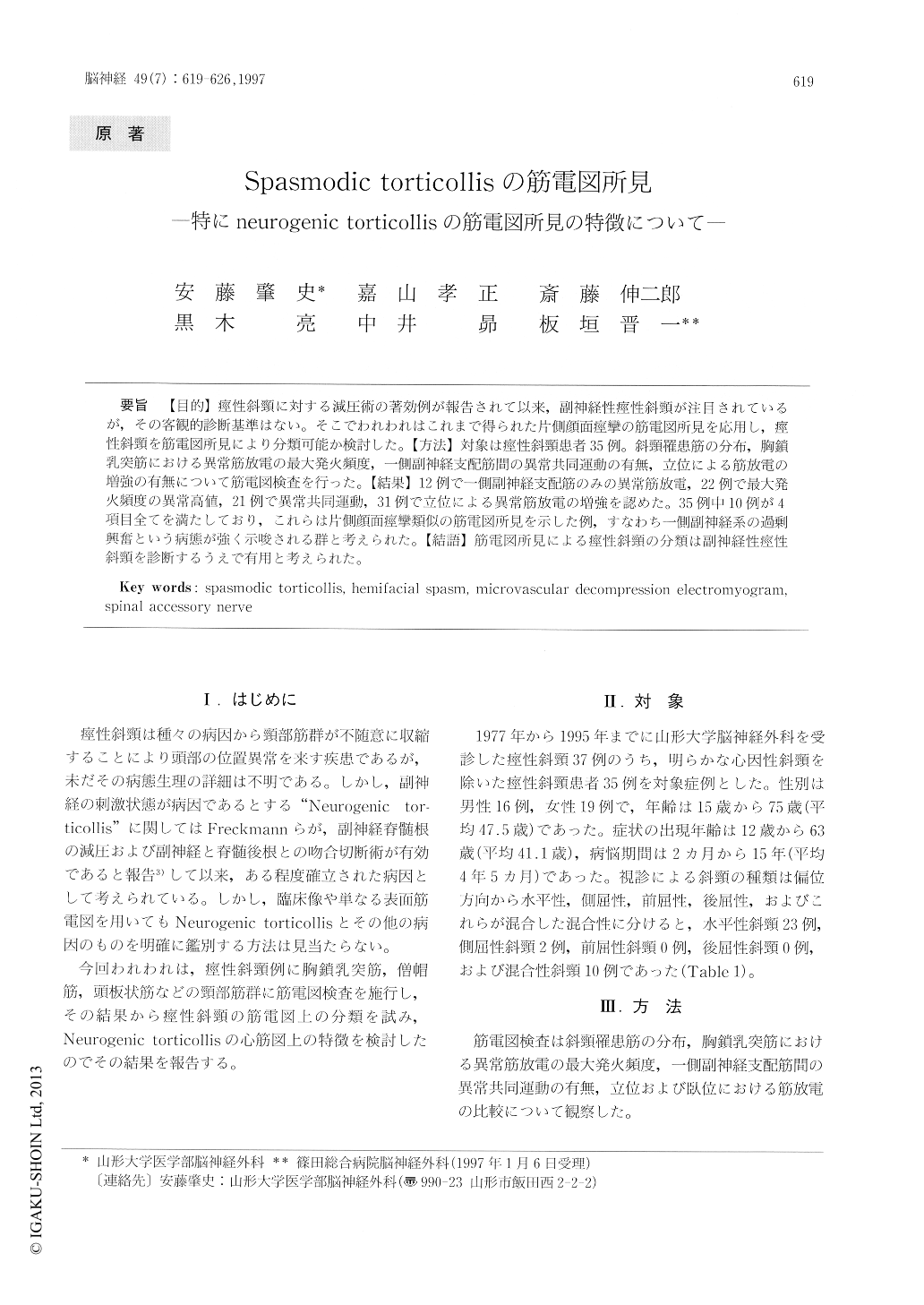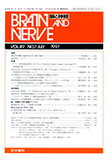Japanese
English
- 有料閲覧
- Abstract 文献概要
- 1ページ目 Look Inside
【目的】撰性斜頸に対する減圧術の著効例が報告されて以来,副神経性痙性斜頸が注口されているが,その客観的診断基準はない。そこでわれわれはこれまで得られた片側顔面痙攣の筋電図所見を応用し,痙性斜頸を筋電図所見により分類可能か検討した。【方法】対象は痙性斜頸患者35例。斜頸罹患筋の分布,胸鎖乳突筋における異常筋放電の最大発火頻度,一側副神経支配筋間の異常共同運動の有無,立位による筋放電の増強の有無について筋電図検査を行った。【結果】12例で一側副神経支配筋のみの異常筋放電,22例で最大発火頻度の異常高値,21例で異常共同運動,31例で立位による異常筋放電の増強を認めた。35例中10例が4項目全てを満たしており,これらは片側顔面痙攣類似の筋電図所見を示した例,すなわち一側副神経系の過剰興奮という病態が強く示唆される群と考えられた。【結語】筋電図所見による痙性斜頸の分類は副神経性痙性斜頸を診断するうえで有用と考えられた。
Spasmodic torticollis is a clinical entity that is hard to treat though various symptomatic therapy have been tried. On the other hand, microvascular decompression operation have been established for cranial nerve vascular compression syndrome such as hemifacial spasm. Case reports on the decompres-sion of the spinal accessory nerve for the treatment of spasmodic torticollis have been published on the basis of the concept of cranial nerve vascular com-pression syndrome.

Copyright © 1997, Igaku-Shoin Ltd. All rights reserved.


